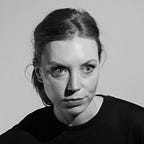All the little pieces
One of the best courses that I have taken was during my undergraduate degree in art school, and has stuck with me years since, is a class on the creative process.
There were only two projects, and the one that I keep returning to at certain points in my life, was an assignment that spanned across 30 days. The challenge taught us discipline and the importance of putting in the work. This was the leitmotif of my college: it was about the process and letting that guide what the outcome of the artwork was going to be. But, that particular assignment also required that we show our process in three stages, which laid the foundation for how one ‘communicates’ in visual art: source, relationship and outcome.
To keep the project from become unwieldy we chose a standardised source material (for me, the New York Times front page), draw the relationship of what was happening in that source material and then create ‘a work of art’ (not necessarily finished works of art — I made animations with balled up pieces of paper and bits of string) that showed that relationship.
It sounds confusing until you think about what this is actually teaching you: to break down ‘big’ concepts around you, and communicate them simply. ‘Connect the dots’ at first glance looks like formless dust until you begin to see the relationship between point 1, point 2, and so forth.
You can apply this to so many different aspects. When it comes to learning something new, you don’t begin at the end. You have to learn a set foundation that will become the building blocks for your new level of knowledge. If you’re trying to communicate an idea to people who are less familiar with it from you, you don’t start with an assumed ‘higher level’ of understanding — you have to start with the pieces that will click into place.
This has come up again for me as I’ve dove back into learning programming. Projects can look far too big to be solved until you diagram out what actually needs to happen, and what code you need to write. The diagram is the map or the outline of what you want to accomplish. So far it has been a lot of work, and some degree of re-wiring in my brain to get me to a place where the concepts will sink in, but it has been so rewarding.
